Non-standard deck by Maillard
Attractive deck by the Portuguese maker Maillard, c.1885 with scenic aces and German-style courts
This handsome French-suited deck is anonymous but believed to have been made by the Portuguese maker J. Maillard, Lisbon, c.1885. The four aces are particularly attractive, and three of them have different scenes at each end, either exotic birds or other unnamed views, while the ace of diamonds is suggestive of an official dedication.
The court figures are unnamed, double-ended and the same at each end. Similar ones were published by J. J. Nunes of Lisbon. The fully bearded kings and attire of the queens are reminiscent of German patterns which were in turn derived from the French Paris pattern. The influence of Frankfurt card-makers upon Portuguese card-making has been noted, and for example Costa & Valerio produced copies of Dondorf designs. The cards are printed from engraved plates and hand coloured using stencils.
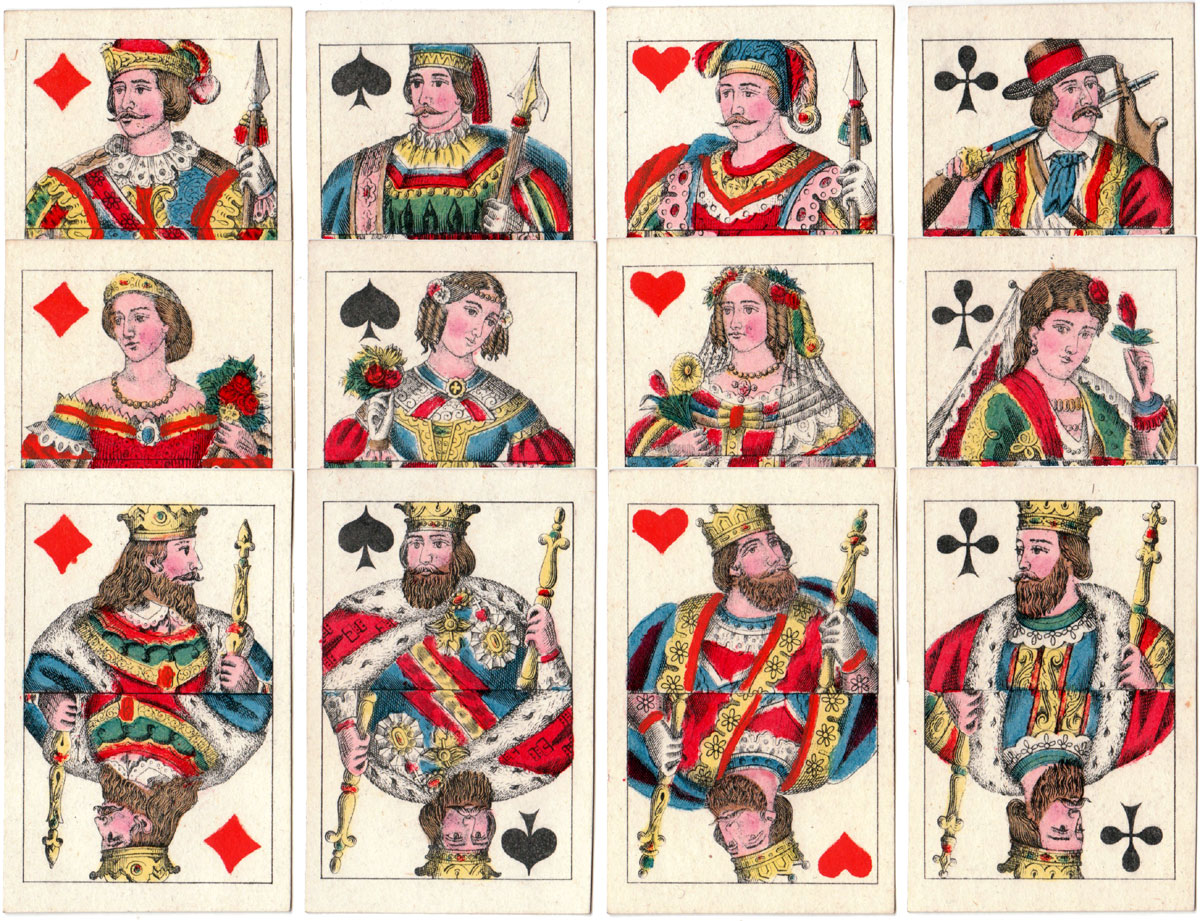
Above: court cards from German-style deck manufactured by Maillard of Portugal, c.1885. The kings all wear beards and carry sceptres whilst the queens hold flowers. 32 or 52 cards, square corners and no indices. Images courtesy Rex Pitts/Ken Lodge.
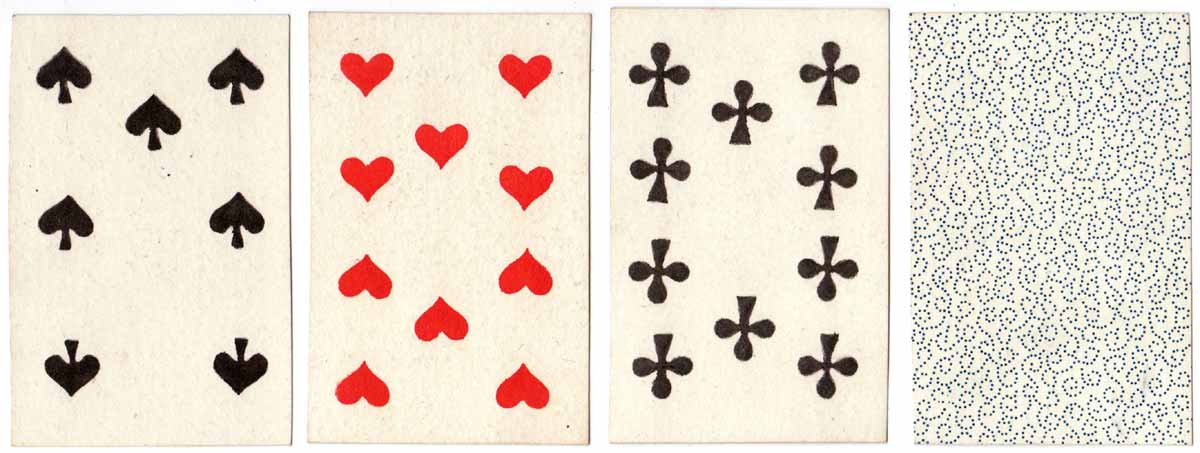
Above: three numeral cards and the back design.
By Rex Pitts (1940-2021)
United Kingdom • Member since January 30, 2009
Rex's main interest was in card games, because, he said, they were cheap and easy to get hold of in his early days of collecting. He is well known for his extensive knowledge of Pepys games and his book is on the bookshelves of many.
His other interest was non-standard playing cards. He also had collections of sheet music, music CDs, models of London buses, London Transport timetables and maps and other objects that intrigued him.
Rex had a chequered career at school. He was expelled twice, on one occasion for smoking! Despite this he trained as a radio engineer and worked for the BBC in the World Service.
Later he moved into sales and worked for a firm that made all kinds of packaging, a job he enjoyed until his retirement. He became an expert on boxes and would always investigate those that held his cards. He could always recognize a box made for Pepys, which were the same as those of Alf Cooke’s Universal Playing Card Company, who printed the card games. This interest changed into an ability to make and mend boxes, which he did with great dexterity. He loved this kind of handicraft work.
His dexterity of hand and eye soon led to his making card games of his own design. He spent hours and hours carefully cutting them out and colouring them by hand.

Leave a Reply
Your Name
Just nowRelated Articles
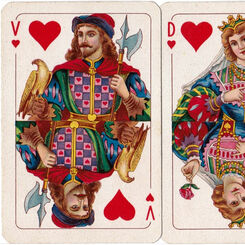
Middle Ages
Middle Ages by Germano & Cª, (Litografia Maia),
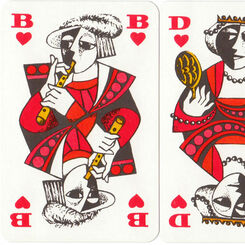
Hannelore Heise: “Essay” & “Gracia”
Two charming designs by Hannelore Heise from Germany.

Boulogne-sur-Mer Chamber of Commerce
Boulogne-sur-Mer Chamber of Commerce & Industry playing cards illustrated by James Hodges, c.1974.
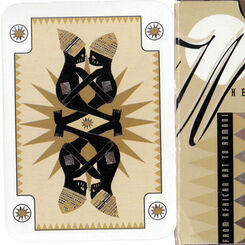
Sandton City
African tribal mask playing cards for Sandton City, Johannesburg.

Jean Borin
‘Cartes de Luxe’ with artwork by Belgian artist and designer Jean Borin (1907-1997).
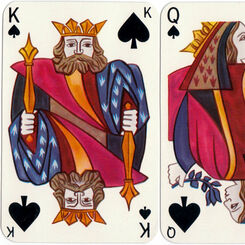
Classique
“Classique” by Draeger Frères, Paris, c.1949 with designs reminiscent of early French cards.
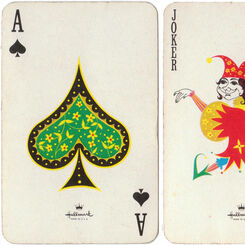
Trump 777
Trump 777 decorative playing cards by Hallmark.
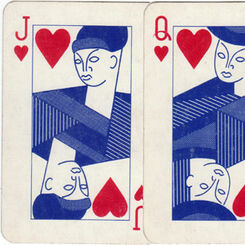
Blue Playing Cards
“Blue Playing Cards” by Piatnik, 1960s, inspired by the Cubism art movement in which objects are ana...
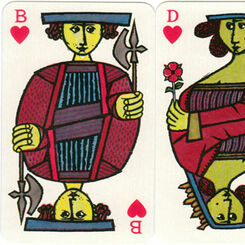
Öbergs ‘Comedia’
Öbergs “Comedia” playing cards designed by Stig Lindberg from Sweden, c.1958

Four Centuries
“Four Centuries” playing cards by Esselte Öbergs with court cards depicted as caricatures from diffe...

Utamaro “Ukiyo-e” playing cards
Utamaro Ukiyo-e playing cards showing woodblock prints of beautiful women.
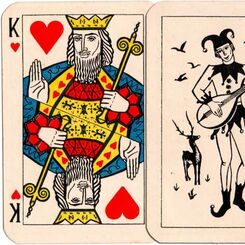
Anonymous Dutch deck, 1940s
Anonymous Dutch deck, 1940s
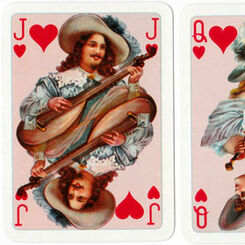
Club Bridge
Modiano’s ‘Club Bridge’ is a new edition of a stylish deck originally published in c.1895.

White Palekh
“White Palekh” was first published by the The Colour Printing Plant in St. Petersburg in 1982 with d...
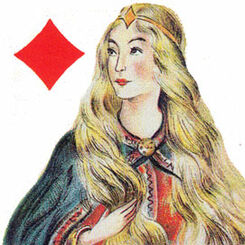
Iceland’s Waterfalls
“Iceland” playing cards with scenic aces designed by Guðmundur Thorsteinsson were first published in...
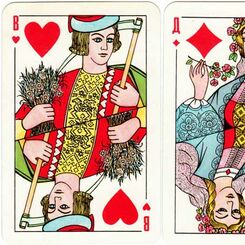
Russian Four Seasons
“Seasons” playing cards designed by U. P. Ivanov and published by The Colour Printing Plant in St Pe...
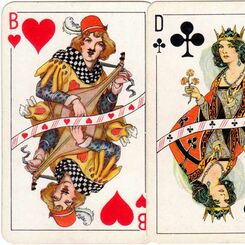
De la Rue for export
Non-standard playing cards produced by De la Rue & Co. (London), c.1930s

Credito Commerciale
Playing cards designed by Enzo Laurà for Credito Commerciale, 1978.

Première Croisade
Deck evoking the ‘Première Croisade’ with single-ended courts by Daveluy, Bruges, c.1850.
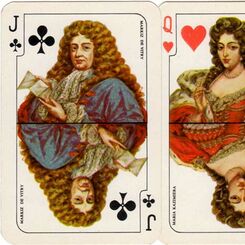
Relief of Vienna
“Relief of Vienna” tri-centenary pack, 1983
Most Popular
Our top articles from the past 60 days



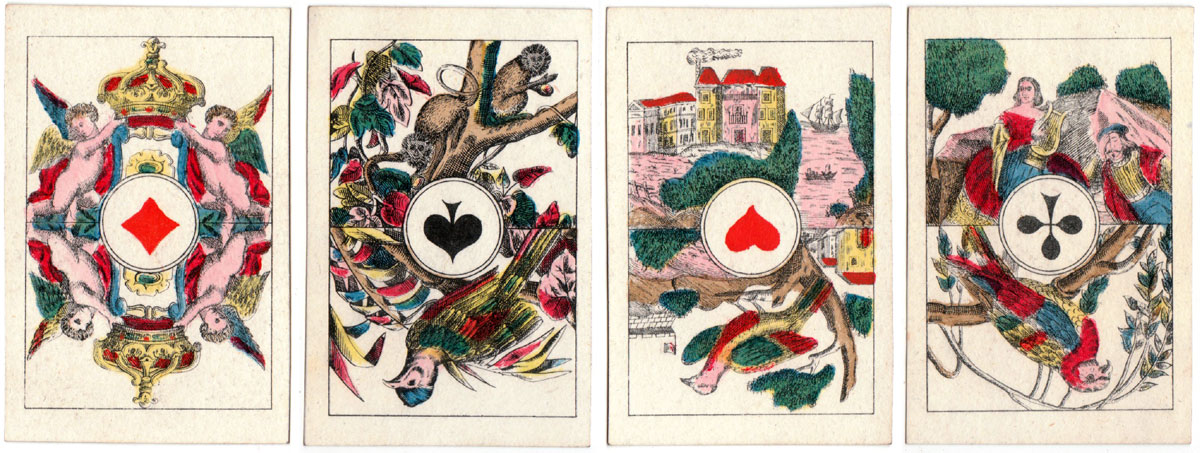
 Your comment here. Your comment here. Your comment here. Your comment here. Your comment here. Your comment here. Your comment here. Your comment here. Your comment here. Your comment here. Your comment here. Your comment here. Your comment here. Your comment here. Your comment here. Your comment here. Your comment here. Your comment here. Your comment here. Your comment here. Your comment here. Your comment here. Your comment here. Your comment here. Your comment here. Your comment here. Your comment here. Your comment here. Your comment here. Your comment here. Your comment here. Your comment here.
Your comment here. Your comment here. Your comment here. Your comment here. Your comment here. Your comment here. Your comment here. Your comment here. Your comment here. Your comment here. Your comment here. Your comment here. Your comment here. Your comment here. Your comment here. Your comment here. Your comment here. Your comment here. Your comment here. Your comment here. Your comment here. Your comment here. Your comment here. Your comment here. Your comment here. Your comment here. Your comment here. Your comment here. Your comment here. Your comment here. Your comment here. Your comment here.




















